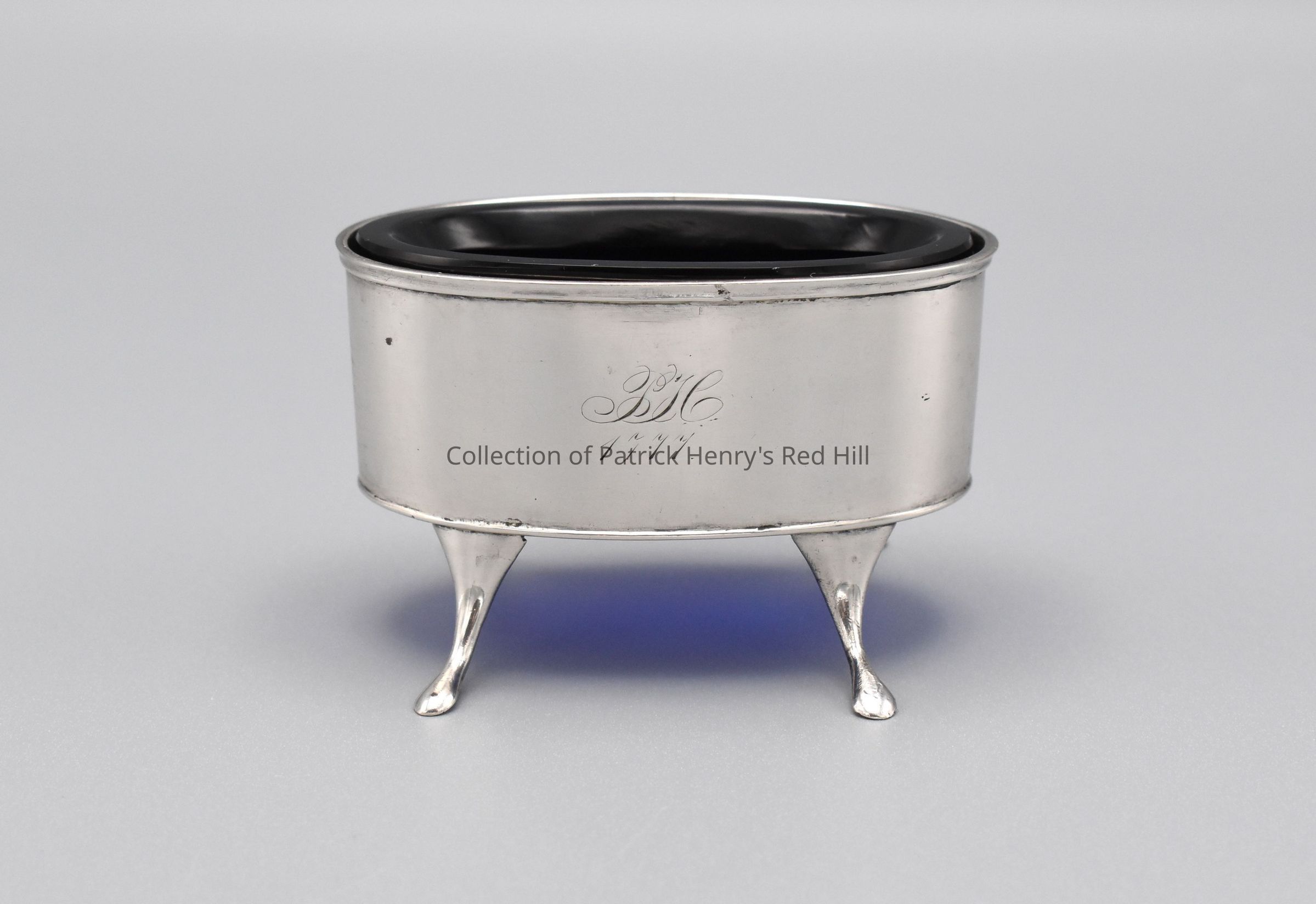Notes
This coin silver saltcellar is one of a set originally belonging to Patrick Henry.
The earliest recorded provenance for the saltcellars is detailed in a letter (04.13.2) by Henry's great-granddaughter, Lucy Gray Henry Harrison (1857–1944), to Philadelphia auctioneer Stan V. Henkels on May 25, 1910: "I have six pieces of silver which Henry bought in 1777, when he was first Governor of Virginia, they are a set of casters, very graceful design and fine workmanship, a silver frame for a platter and 4 salt cellars, these are oval in shape with 4 small feet and lined with blue glass (two of these blue glass linings are broken but can easily be replaced.) In every other respect the silver is in perfect condition and each piece is marked P.H. 1777."
In a later letter (04.13.19) to Henkels dated December 10, 1910, Harrison recalls of the silver, "I have heard my father [William Wirt Henry (1831–1900)] say that it was supposed to have been bought at the sale of Lord Dunmore’s effects, but, even if this is not so it must have been imported." This has since been disproven.
The "W·R" maker's mark on the underside of each piece attributes them to the work of Captain William Richardson (1755–1809) of Richmond, Virginia. Richardson was a notable figure in Richmond, later serving as the city's mayor. At the time these pieces were commissioned, around 1785, he was a young silversmith; the workmanship (e.g., the lack of piercing and engraving) demonstrates that a competent, though not expert, silversmith made them, as Mr. Richardson would have been at this time.
William went into business with his brother, George, about 1782. The first mention of William appears in the Richmond enumeration of that same year, where he is listed with his father (a joiner), mother, brother, and two sisters. The first advertisement for their firm appeared in May 1785 when the brothers accepted two young apprentices. This suggests that the cellars could not have been made in 1777, as the engraving indicates, and are more likely to date to circa 1785.
Patrick Henry likely received these saltcellars—either by purchase or gift—around 1785 while serving as governor in Richmond. They could have been inscribed with "PH 1777" to celebrate the anniversary of his marriage to Dorothea Dandridge, which occurred earlier on October 9, 1777, or his election to his second term as governor on May 29, 1777.
Following Henry's death, the saltcellars were listed in an estate inventory taken at Red Hill in 1799. They appear as "1 ditto [Silver] Salts" worth £1, 4 shillings. They appear again in the 1802 estate inventory as "2 salt cellars." The cellars then descended from Patrick Henry to his widow, Dorothea, then to their youngest son, John (1796–1868). John Henry's son, William Wirt Henry (1831–1900), inherited them and passed them on to his daughter, Lucy Gray Henry Harrison (1856–1944). All four saltcellars appear in a photograph of Mrs. Harrison's dining room (76.144.6).
After Mrs. Harrison's death, the Patrick Henry Memorial Foundation purchased the saltcellars from the executrix of her estate, Elizabeth Kerper, on June 30, 1945.
